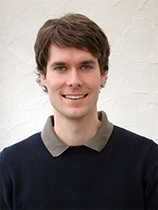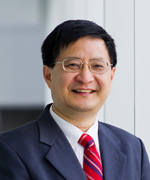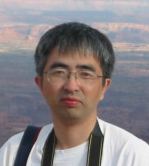Keynote Speakers
| Human Pose: A Cue for Activities and Objects |
| Prof. Juergen Gall, University of Bonn, Germany |
| Pattern Recognition Methods for Genomic and Biomolecular Data Analysis |
| Prof. Hong Yan, City University of Hong Kong, Hong Kong |
| Development and Applications of 3D Morphable Face Model |
| Prof. Josef Kittler, University of Surrey, United Kingdom |
| Face Recognition from Video: Challenges and Opportunities |
| Prof. Xilin Chen, Chinese Academy of Sciences, China |
Human Pose: A Cue for Activities and Objects
Speaker:Prof. Juergen Gall, University of Bonn, Germany
Abstract
In the first part of the talk, I will show how random forests can be used to efficiently estimate 2D or 3D pose from images. The second part discusses human pose as a cue for action recognition, object discovery, and affordance detection. In order to allow a systematic performance evaluation of an action recognition pipeline, we annotated human joints for the HMDB dataset (J-HMDB). The annotation can be used to systematically replace the output of various algorithms in an existing pipeline with ground truth data to analyze the components with the highest potential for improving the recognition accuracy. For example, is it worth to invest more time on improving low-level algorithms like optical flow, is the image location of the human performing the action important, or would knowledge about human pose be helpful? Given pose and activities, we can also reason about objects and their functionality. For example, small objects can be discovered from videos and used to train an object detector or an affordance detector.
Presenter Bio
 Prof. Juergen Gall, University of Bonn, Germany
Prof. Juergen Gall, University of Bonn, Germany
http://www.iai.uni-bonn.de/~gall/
Juergen Gall obtained his B.Sc. and his Master’s degree in mathematics from the University of Wales Swansea (2004) and from the University of Mannheim (2005). In 2009, he obtained a Ph.D. in computer science from the Saarland University and the Max Planck Institut für Informatik. He was a postdoctoral researcher at the Computer Vision Laboratory, ETH Zurich, from 2009 until 2012 and senior research scientist at the Max Planck Institute for Intelligent Systems in Tübingen from 2012 until 2013. Since 2013, he is professor at the University of Bonn and head of the Computer Vision Group. He co-organized several workshops and tutorials on solving real-world vision problems with RGB-D cameras and on affordances for scene analysis. He received a grant for an Emmy Noether research group from the German Research Foundation (DFG) in 2013 and the German Pattern Recognition Award of the German Association for Pattern Recognition (DAGM) in 2014.
Back to top
Pattern Recognition Methods for Genomic and Biomolecular Data Analysis
Speaker:Prof. Hong Yan, City University of Hong Kong, Hong Kong
Abstract
Biomolecules, such as DNA and proteins, are extremely “intelligent”. They can perform sophisticated molecular recognition tasks, which no existing computer based pattern recognition methods can match. Computational analysis of genomic and biomolecular data is indispensable for understanding such intelligence, the underlying biological structures and processes, and biological lives in general. In this talk, I’ll provide an introduction to different types of genomic and biomolecular data, and present our work on DNA sequence and gene expression data analysis and prediction of biomolecular interactions using pattern classification algorithms. I’ll discuss a geometric biclustering method our group has developed, which can be used to detect coherent patterns in terms of subsets of genes and subsets of conditions. An interesting link between geometric biclustering and the spectral graph theory will also be demonstrated. The method can be applied to disease diagnosis and drug therapeutic effect assessment based on gene expression data. I’ll also discuss a 3D pattern matching technique for identifying potential hydrogen bonds from all possible donor and acceptor atoms in two biomolecules. In this algorithm, compatibility measures developed in pattern recognition can be used to formulate cooperativity in biological systems mathematically. This method has been applied to the prediction of interactions between proteins and drug molecules and the analysis of lung cancer drug resistance.
Presenter Bio
 Prof. Hong Yan, City University of Hong Kong, Hong Kong
Prof. Hong Yan, City University of Hong Kong, Hong Kong
http://www.ee.cityu.edu.hk/~hpyan/
Hong Yan received his Ph.D. degree from Yale University. He was Professor of Imaging Science at the University of Sydney and is currently Professor of Computer Engineering at City University of Hong Kong. His research interests include image processing, pattern recognition and bioinformatics, and he has over 300 journal and conference publications in these areas. Professor Yan was elected an IAPR Fellow for contributions to document image analysis and an IEEE Fellow for contributions to image recognition techniques and applications. He is currently a Distinguished Lecturer of the IEEE SMC Society.
Back to top
Development and Applications of 3D Morphable Face Model
Speaker:Prof. Josef Kittler, University of Surrey, United Kingdom
Abstract
3D face models in general, and the 3D Morphable Face Model (3DMM) in particular, have been used in face recognition for some time now. They can be applied in their own right as a basis for 3D face recognition and analysis involving 3D face data. However their prevalent use over the last decade has been as a versatile tool designed to assist 2D face recognition in many different ways. For instance, 3DMM can be used for pose, illumination and expression normalisation of 2D face images. It has the generative capacity to augment the training and test databases for various 2D face processing related tasks. It can expand the gallery set for pose invariant face matching. For any 2D face image it can furnish complementary information, in terms of its 3D shape and texture. It can also aid multiple frame fusion by providing the means of registering a set of 2D images.
A key enabling technology for this versatility is 3D face model to 2D face image fitting. The recent developments in 3D model to 2D image fitting will be discussed. They include the use of symmetry to improve the accuracy of illumination estimation, multistage close form fitting to accelerate the fitting process, modifying the imaging model to cope with 2D images of low resolution, and building albedo 3DMM. These various enhancements will be overviewed and their merit demonstrated on a number of face analysis related problems.
Presenter Bio
Prof. Josef Kittler, University of Surrey, United Kingdomhttp://www.surrey.ac.uk/cvssp/people/josef_kittler/
Josef Kittler is professor of Machine Intelligence at the Centre for Vision, Speech and Signal Processing, University of Surrey. He received his BA, PhD and DSc degrees from the University of Cambridge. He teaches and conducts research in the subject area of Signal Processing and Machine Intelligence, with a focus on Biometrics, Video and Image Database retrieval, Automatic Inspection, Medical Data Analysis, and Cognitive Vision. He published a Prentice Hall textbook on Pattern Recognition: A Statistical Approach and several edited volumes, as well as more than 700 scientific papers, including in excess of 150 journal papers. He serves on the Editorial Board of several scientific journals in Pattern Recognition and Computer Vision. He became Series Editor of Springer Lecture Notes on Computer Science in 2004. He served as President of the International Association for Pattern Recognition 1994-1996. He was elected Fellow of the Royal Academy of Engineering in 2000. In 2006 he was awarded the KS Fu Prize from the International Association in 2006, for outstanding contributions to pattern recognition. He received Honorary Doctorates from the University of Lappenranta in 1999 and the Czech Technical University in Prague in 2007. In 2008 he was awarded the IET Faraday Medal and in 2009 he became EURASIP Fellow.
Back to top
Face Recognition from Video: Challenges and Opportunities
Speaker:Prof. Xilin Chen, Chinese Academy of Sciences, China
Abstract
Face recognition from video typically needs to work on low-quality frame(s) captured under unconstrained conditions, which is challenging due to noise, blur, lower resolution, complex illumination, and head pose. Even for those methods working well on high resolution still image, their performances decrease dramatically on video. On the other hand, the consequent frames from video provide complementary information, and we believe this will play an important role in video case.
In this talk, I will show some of our efforts on face recognition from video. To take the advantage of multiple frames from video, we model the video as a set of images, and represent the set as a manifold. This allows us to utilize multiple frames in recognition. To deal with the low quality frames in video, we propose to alignment manifolds through a reference model. In frame level, we couple the procedure of face alignment and recognition in a loop. Some metrics are explored. I will report the results on different types of video.
Presenter Bio
 Prof. Xilin Chen, Chinese Academy of Sciences, China
Prof. Xilin Chen, Chinese Academy of Sciences, China
http://vipl.ict.ac.cn/members/xlchen
Xilin Chen received the B.S., M.S., and Ph.D. degrees in computer science from Harbin Institute of Technology, China, in 1988, 1991, and 1994, respectively. He was a professor with the Harbin Institute of Technology from 1999. He was a visiting scholar with Carnegie Mellon University, Pittsburgh, PA, from 2001 to 2004. Since August 2004, He has been a professor with the Institute of Computing Technology, Chinese Academy of Sciences (CAS), where he is also with the Key Laboratory of Intelligent Information Processing, CAS. He is the Director of the Key Laboratory of Intelligent Information Processing, CAS. He has published one book and over 200 papers in refereed journals and proceedings in the areas of computer vision, pattern recognition, image processing, and multimodal interfaces. He is an associate editor of the IEEE Transactions on Image Processing, a leading editor of the Journal of Computer Science and Technology, and an associate editor in chief of the Chinese Journal of Computers. He served for some conferences, including general chair of FG 2013, program chair of ICMI 2010, etc. He is a Fellow of the China Computer Federation (CCF).
Back to top